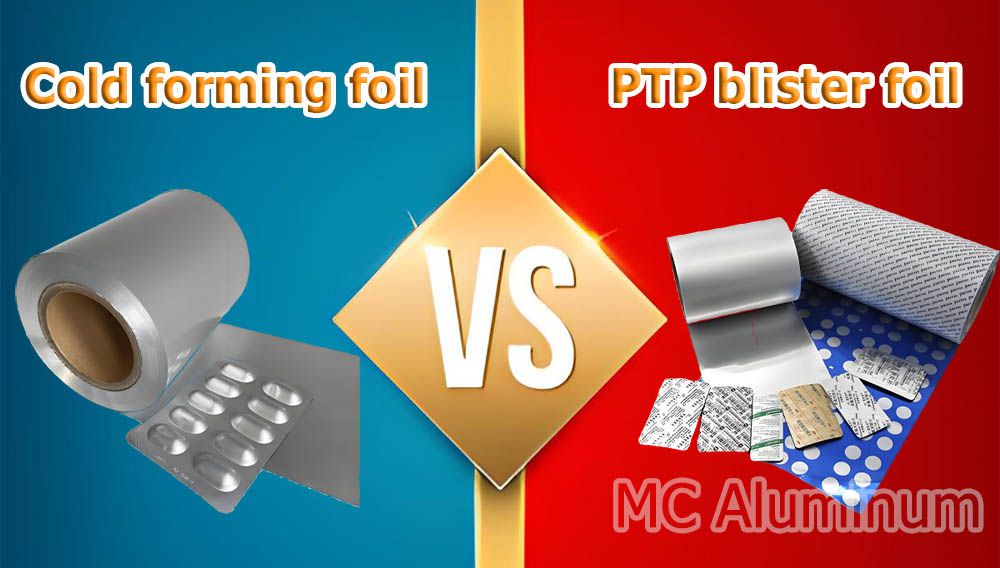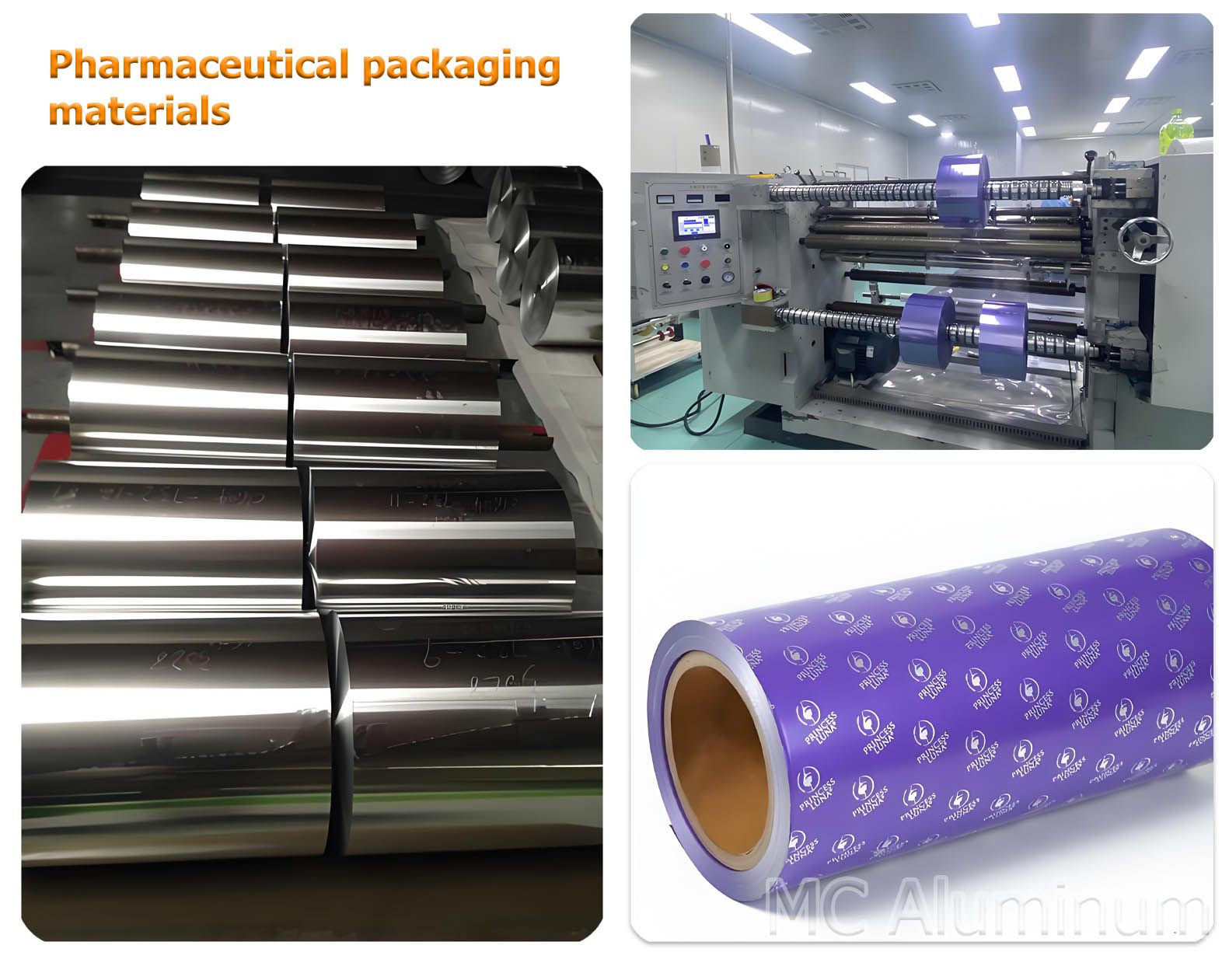In the pharmaceutical industry, packaging is more than just a protective shell for medications — it plays a crucial role in maintaining drug stability and efficacy. For solid dosage forms such as tablets and capsules, blister packaging has become the mainstream due to its moisture resistance, anti-contamination properties, and user convenience. Among the core materials for blister packs, PTP blister foil and cold forming foil are the two most commonly used options.
Overview of PTP Blister Foil
PTP (Push Through Packaging) blister foil, often referred to as aluminum-plastic blister lidding foil, is a heat-sealable aluminum foil laminated with plastic substrates such as PVC, PVDC, or PP. It typically consists of a layer of aluminum foil, a heat-seal coating, and a printed primer. When the user presses the tablet or capsule through the blister, the foil is punctured and the product is dispensed with ease.
Overview of Cold Forming Foil
Cold forming aluminum foil, commonly known as Alu-Alu foil, is a multi-layer composite material typically made from OPA (nylon), aluminum, and PVC (polyvinyl chloride). It is formed through a "cold forming" process, where the blister cavity is mechanically shaped at room temperature without heat. This provides excellent barrier properties for sensitive pharmaceuticals.
Key Differences Between PTP and Cold Forming Foil

1.Barrier Performance
PTP Blister Foil: Offers medium barrier protection against oxygen, water vapor, and UV light depending on the foil thickness and integrity.
Cold Forming Foil: Contains thicker aluminum (typically >40μm), offering significantly better barrier properties. Its high ductility ensures no cracks after forming, making it suitable for moisture- and oxygen-sensitive drugs such as biologics.
2.Forming Technology
PTP Blister Foil: Requires heat sealing to plastic substrates (e.g., PVC, PP) with a typical forming temperature of 120–180°C. It is well-suited for high-speed production lines.
Cold Forming Foil: Uses cold stamping technology at ambient temperatures without heating, making it ideal for heat-sensitive medications.
3.Application Scenarios
PTP Blister Foil: Ideal for conventional solid dosage forms like tablets and capsules, balancing cost-efficiency with essential protection. It supports unit-dose packaging and is widely adopted in the market.
Cold Forming Foil: Recommended for high-value, sensitive medications (e.g., insulin, vaccines), providing maximum protection to prevent degradation.
4.Economic Cost
Cold forming foil is 30–50% more expensive than PTP blister foil due to its thicker aluminum and complex structure.
Sustainability Challenges
PTP Foil: Difficult to recycle due to plastic layers like PVC, although aluminum can be separated and recycled.
Cold Forming Foil: The multi-layer structure makes recycling more complex, but developments in bio-based adhesives and degradable PVC are underway.
How to Choose?
Whether to use PTP blister foil or cold forming foil depends on the specific needs and budget of your pharmaceutical product.
If your medication is not particularly sensitive to moisture, oxygen, or light, and if cost and production speed are major concerns, then PTP blister foil is a more economical and efficient choice. It offers sufficient protection and allows consumers to view the product directly.
However, if your drug is highly sensitive and requires maximum barrier protection to ensure its stability, efficacy, and shelf life, cold forming foil is undoubtedly the better option. Although more costly, its exceptional protection is ideal for high-value or environmentally sensitive drugs.

As a large-scale manufacturer of pharmaceutical packaging materials, MC Aluminum specializes in producing PTP aluminum foil, cold forming foil, tropical blister foil, PVC/PVDC composite sheets, PVC rigid films, PVC/PE laminated sheets, 8011 aluminum foil, 8079 aluminum foil, and more. Our products feature stable quality, strict production control, fast delivery, competitive pricing, and global export capability. Samples are available upon request.
